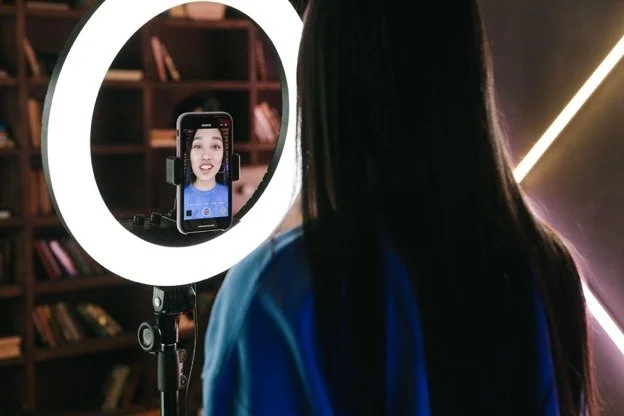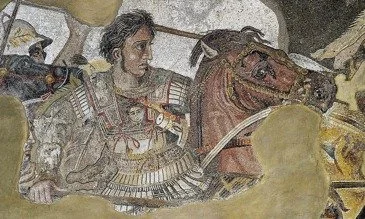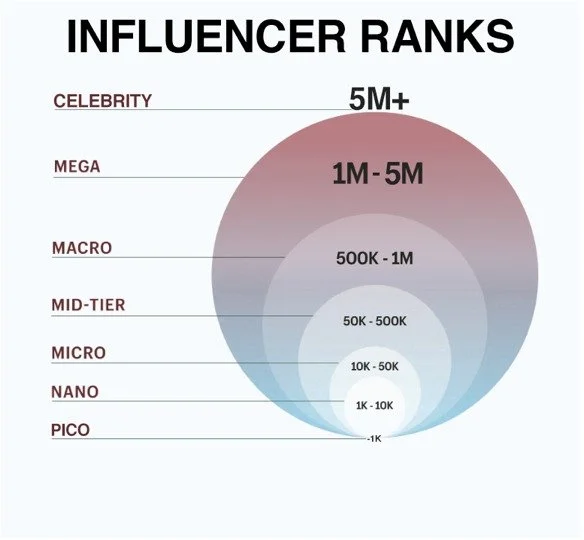Image by Ivan Samkov
#Homo Influensus: How Social Media has Reinvented the Art of Self-Branding for the Most Influential People
By Tyanna Slack
HOW IT STARTED
Since before the common era, humans have been branding their images. The earliest recorded versions of human brands were of the ruling class. During these times, influential individuals were associated with something revolutionary and were known worldwide. Alexander the Great (356 – 323 BC) is highly known as the King of Macedonia and one of history's greatest military tacticians that established one of the largest empires the ancient world had ever seen. Socrates (469 BC–399 BC) gained notoriety from his role as a Greek philosopher largely credited with contributing to the development of Western philosophical and political thought; while Cleopatra (69 -30 BC) was the last Ptolemaic ruler of Ancient Egypt who sought to defend her territory from the expanding Roman Empire. She was also immortalized by her infamous relationships with two of Rome’s most prominent political figures—Marc Anthony and Julius Caesar, each also famous in their own right. From the age of antiquity until the late 1800s, influential individuals asserted their status through their titles, holdings, and capabilities.
HOW IT DEVELOPED
The modern rendition of the human brand is the celebrity. Companies and organizations have used celebrities to add weight to their value propositions and promote the likability of their products since the 1760s. The founder of the Wedgwood brand of pottery and chinaware, Josiah Wedgewood, used royal endorsements to create an air of prestige around the name of his company that gave the brand a quality beyond the products. By the late 1800s, trading cards paired images of celebrities with product descriptions of everyday consumer goods, as a form of associative endorsement, without even offering a quote or direct testimonial. They featured actors like Lily Langtry and Sarah Bernhardt and all-star baseball players like Cy Young and Ty Cobb. Although many celebrities were being used to add cachet to brands, they weren’t being paid. In the 1930s, baseball legend Babe Ruth was one of the first people paid to endorse a consumer brand, with his Red Rock Cola deal. Since then, the trend has been moving forward with athletes, musicians, and actors to promote consumer brands. Michael Jackson, popularly styled as the “King of Pop”, was one of the most significant cultural icons of the 20th century. In 1983 he gained the title of having the highest paid celebrity endorsement deal up until that time with a $5 million contract he inked with Pepsi.
HOW IT’S GOING
“Who wouldn't want to get paid just for being yourself?”
The invention of social media has paved the way for a new generation of human brands in the form of social media influencers. Today, one does not need to be an actress, artist, or athlete to be recognized as a brand. It can be done right from your home by doing everyday activities. It has become easier than ever to go viral and be noticed by the world. Popular user generated content platforms like Tik Tok, YouTube, Instagram, and Twitch have ultimately created a space for people to showcase their talents, thoughts, and daily lives. Content creators like Charli D’Amelio have made simple productions like homemade dance videos on TikTok a trending sensation on their road to riches. Influencers are currently paid as much as six figures per post by advertising products or services on their channels. Who wouldn’t want to get paid just for being yourself? With the social media influencer market set to be worth more than $16.4 billion in 2022, Influencers have become increasingly abundant.
There are various interpretations of influencer classification, but for the sake of this discussion we will settle on six general categories: celebrity influencers, mega influencers, macro influencers, mid-tier influencers, micro influencers, and nano influencers. Think of celebrity influencers as people famous through traditional means of popularity and individuals with social media accounts in excess of 5 million followers. With that in mind we can consider mega influencers as people who are internet famous with over a million followers but fewer than 5 million. Likewise, macro-influencers usually gained fame through the internet itself, whether that was through vlogging, or by producing funny or inspiring content, with followings between 500,000 and 1 million people. Mid-tier influencers occupy the purgatory between the major players and humble startups with 50,000 to 500,000 followers. A micro-influencer is someone who has between 10,000 to 50,000 followers, usually with a highly specific subject interest. Nano-influencers are the most recent form of influencer to gain recognition from marketers with 1,000 to 10,000 followers. They have a smaller audience size, but like other small-scale influencers, are likely to have high levels of loyalty, engagement, and mimicry among their followers.
WHAT’S NEXT?
The thought of having celebrity status at a person’s fingertips has inspired many to pursue the route to internet fame. From eating on screen to recording video game playing, various people have gone different routes to become known, for better or for worse, and to eventually generate income as a result. Because the opportunity to brand yourself is now readily available to everyone, one might wonder, “how much opportunity is left in the business of branding one’s content? Where does someone go from here to stay beyond the generic? And what comes next, pico influencers?”
Pico influencers are everyday social media users who share their thoughts, experiences, photos, and even life choices. Whenever a person shares life choices and how it affected them, it has the potential to influence those who cross paths with their message. It might be a message on an Instagram account with few followers, but it can leave a huge impression on those followers’ lives. Pico influencers do not intend to change the world but recognize the power of sharing true experiences.
Consumers may resonate with certain experiences shared, leading to a larger following and awareness of brands represented by pico influencers. Given the higher likelihood that the pico influencer has a real-life relationship with the majority of their followers, brands are often deemed more authentic. Relatability and originality are the keys to going beyond the generic. Pico influencers have the ability to merge into a larger collective as a means of mass activation for brands, which can reduce spending through the use of shareable free promotions as incentives. Although nano influencers have larger followings, pico influencers are valued for their authenticity and relatability. Brands, especially those with limited resources, can view the cultivation of relationships with pico influencers as mutually beneficial. As the influencer grows through their legitimization as a result of their branded sponsorship, they simultaneously become an increasingly beneficial asset to the brand.
Brand + Pico Influencer Advantages
Affordability: Because a brand pays an influencer for content based on their following, pico influencers are affordable for brands. These influencers are typically looking to grow their following, so it is common for them to try to make a lasting impression on their brand partners. All of these factors generally create a strong return on investment for a brand’s spending and may even create a possibility for contractual agreements if the initial low count influencer grows into a low cost partnership with a much more powerful online presence.
Engagement & Expansion: A frequent worry with pico influencers is that they have a limited impact due to their follower count. However, the engagement and conversion of a pico influencer’s followers are subject to be higher because users believe the individual is more trustworthy and are more likely to comment and engage. Plus, with pico influencers being cheaper to work with, a brand can expand its reach by working with multiple influencers that cover many different market segments. By engaging smaller influencers of different ages and races, brands can reach audiences that might get overlooked if they only worked with a limited number of nano influencers.
As a brand’s status grows the pico influencer will progress into the nano category and become an important resource in the brand’s marketing arsenal. If a brand is working to internally develop this army of highly targeted influencers, once a large percentage of them rank up to the nano level, its presence will become a serious problem for competitors. The only challenge after that is snatching up the most promising pico influencers before competitors do. So what are you waiting for?







